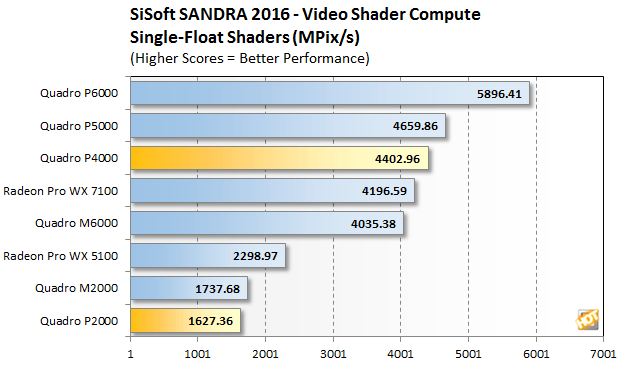NVIDIA Quadro P4000 And P2000 Workstation GPU Review: Midrange Professional Pascal
Quadro P4000 & P2000 Shader Performance
How We Configured Our Test Systems: We tested the professional graphics cards in this article on an Intel X99-based motherboard powered by an Intel Core i7-5960X octal-core processor and 16GB of Corsair DDR4 RAM. The first thing we did when configuring the test system was enter the UEFI and set all values to their "high performance" or "optimal" default settings and disable any integrated peripherals that wouldn't be put to use. The memory's X.M.P. profile was enabled to ensure optimal memory performance and the solid state drive was formatted and Windows 10 Professional x64 was installed. When the installation was complete, we fully updated the OS and installed all of the drivers, applications, and benchmark tools necessary to complete our tests.
|
|
|
| Hardware Used: Intel Core i7-5960X (3GHz, Octa-Core) Asus X99 Deluxe (Intel X99 Chipset) NVIDIA Quadro M2000 NVIDIA Quadro M5000 NVIDIA Quadro P5000 NVIDIA Quadro P6000 NVIDIA Quadro P4000 NVIDIA Quadro P2000 AMD Radeon Pro WX 5100 AMD Radeon Pro WX 7100 16GB Corsair DDR4-2133 OCZ Vertex 4 Integrated Audio Integrated Network |
Relevant Software: Windows 10 Pro x64 AMD Radeon Pro v16 "ReLive" NVIDIA Quadro Drivers v376.33 / v375.86 Benchmarks Used: SPECviewperf 12.1.1 LuxMark v3.1 Cinebench R15 SiSoft SANDRA 2016 3DMark |
|
|
|
First up, we have the Video Shader Compute benchmark built into SiSoft SANDRA 2016. This test performs a series of single and double-precision floating point operations (among others) on the GPU and reports the average speed of results.


In the single-float test, the Quadro P4000 outpaces the Radeon Pro WX7100, but the P2000 can't quite catch the WX5100. In the double-float test, the Pascal-powered P4000 and P2000 drop down a few rungs and trail the rest of the pack, save for the M2000.






